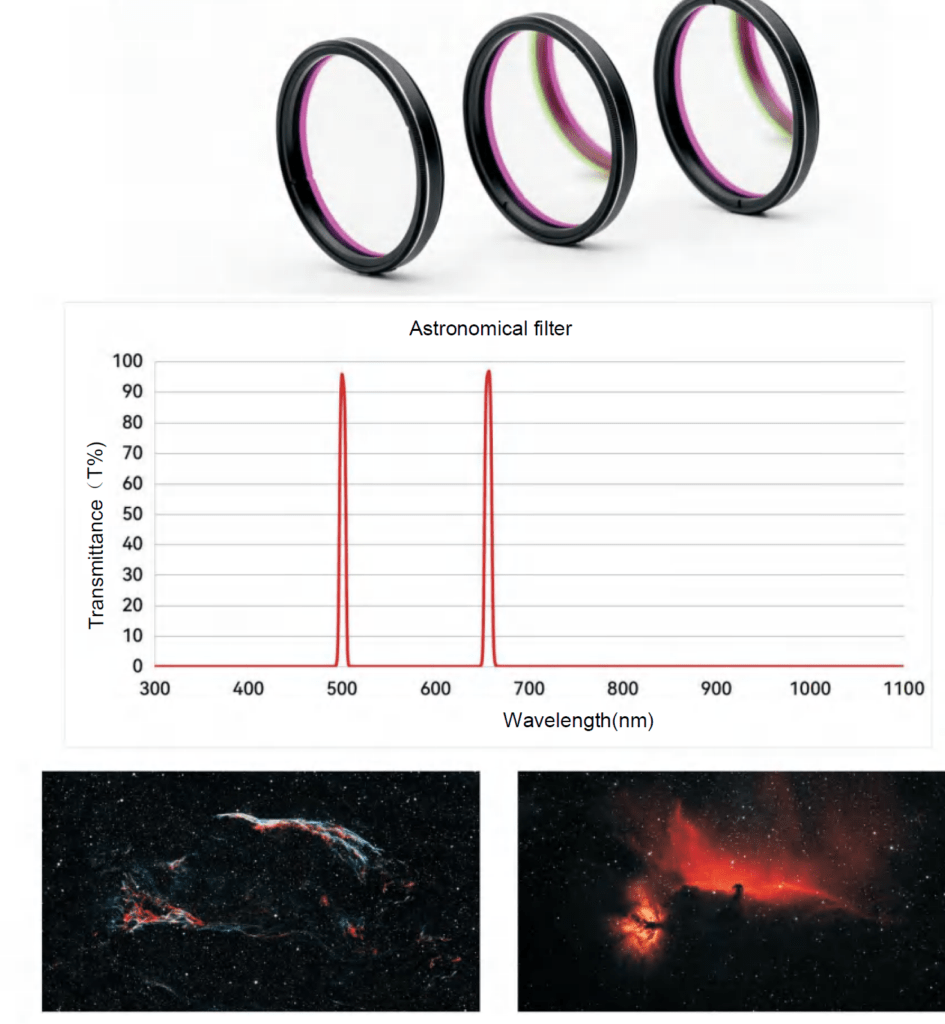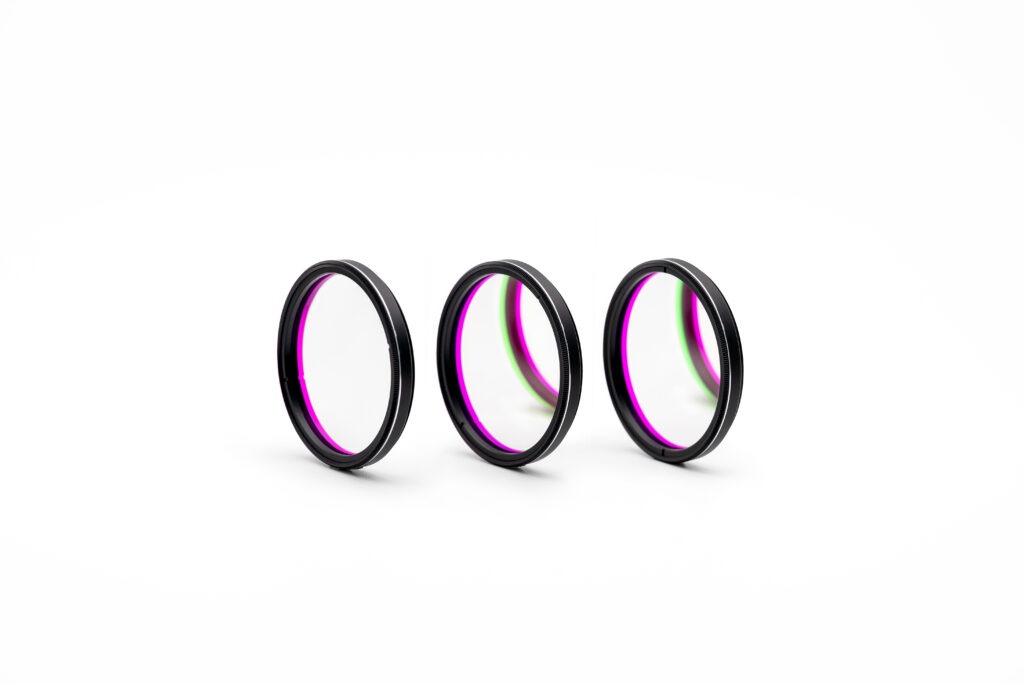1. Features
- Dual-narrow band filters designed for astronomy applications, providing enhanced sky background contrast.
- Ideal for improving signal-to-noise ratio when capturing nebulae, especially in light-polluted environments.
- Effectively filters out most light pollution, allowing for clearer astronomical images.
- High transmittance (T ≥ 90%) across specified narrow bands.
- Customization available to meet specific customer requirements for performance.
2. General Description
The dual-narrow band astronomical filters from Shape Optics Technologies Pte Ltd (SOT) are advanced optical filters designed specifically for astronomical photography. These filters are capable of narrowing the bandwidth of light reaching the imaging system, effectively darkening the background sky and increasing the contrast of nebulae. By filtering out unwanted light pollution, these filters enable astronomers to capture cleaner images of celestial objects, even in urban areas with significant light interference.
These filters are particularly useful for visual and CCD imaging in both amateur and professional astronomy. The filters are manufactured with high precision, ensuring high transmittance in the selected wavelengths and offering significant performance improvements for astronomical telescopes.
In addition, SOT offers customized filters tailored to meet specific wavelength ranges or optical properties as per user requirements.
3. Spectrum Transmission Curves
- The spectrum transmission curves for the dual-narrow band filters demonstrate their high transmittance rates within specific wavelengths, ensuring minimal light loss and optimal filtering performance.
- Customization is available if the standard wavelengths do not meet your specific requirements.

4. Coating Quality
- Adhesion Test: Performed according to MIL-C-675C military standards. A tape, meeting LT-90 specifications, is applied to the lens film layer, removed vertically after full adhesion, repeated three times without blistering or peeling.
- Temperature Test: The test involves subjecting the filters to -62±1°C and 71±1°C. Following a two-hour stabilization at room temperature (16°C~32°C), no film detachment is observed.
- Abrasion Resistance: Conducted as per MIL-C-675C and CCC-C-440 standards using a gauze tester with a minimum force of 1.0 lbs (0.45 kg). This is repeated 25 times to ensure no damage to the surface.
- Humidity Test: Filters are placed in a chamber with 49 ±2°C and 95%-100% humidity for 24 hours. Post-test results show no defects such as peeling or scratches.
- Solvent and Cleaning Test: Filters undergo testing with acetone and alcohol, followed by cleaning with a cotton cloth soaked in alcohol. No surface damage or peeling is observed.
- Salt Spray Test: After being subjected to a 35°C environment with a 5% saltwater concentration for 100 hours, the filters show no visible damage.
5. Standard Specifications
| Model | CWL(nm) | Transmittance | FWHM(nm) | Optical Density | Note |
| Dual-Narrow Band Filter 1 | 350±3 | T ≥ 90% | 20±5 | OD ≥ 3 @ 350-1100 | Customizable for higher requirements |
| Dual-Narrow Band Filter 2 | 500±3 | T ≥ 90% | 20±5 | OD ≥ 3 @ 350-1100 | Customizable for higher requirements |
6. General Applications and Examples
These filters are predominantly used in astronomical telescopes to enhance imaging performance in areas with significant light pollution:
- Astronomical Telescope Imaging: These filters significantly improve contrast and signal-to-noise ratio, particularly for capturing nebulae in urban or light-polluted regions.
- Astrophotography: The filters enable clearer, more detailed images of distant galaxies, nebulae, and other celestial bodies, even under unfavorable light conditions.
- Urban Astronomy: Ideal for amateur astronomers in cities, as the filters help reduce the effects of artificial light on observations.
- Observatories: Used in professional observatories to achieve higher-quality astrophotography, allowing researchers to gather better data from celestial phenomena.
7. SOT Strengths and Capabilities
SOT is a leader in the design and manufacturing of precision optical filters. Our filters offer superior performance with customizable specifications to meet the unique demands of astronomical and other high-performance imaging applications. With a commitment to quality, reliability, and innovation, SOT is dedicated to advancing the field of astronomical optics and providing tailored solutions for various applications. Our team works closely with clients to ensure the highest standards of optical coating and filter performance.
8. Standard Products
- Dual-Narrow Band Filter 1: Optimized for use in visible wavelengths for astronomy applications.
- Dual-Narrow Band Filter 2: Designed for broader wavelength coverage, ideal for capturing a wider range of astronomical emissions.
- Both models are customizable based on wavelength, optical density, and additional customer requirements.

